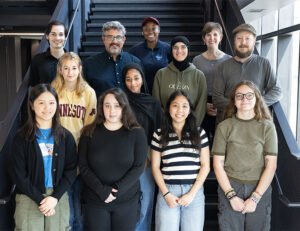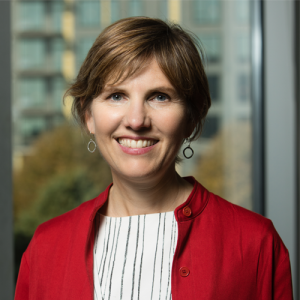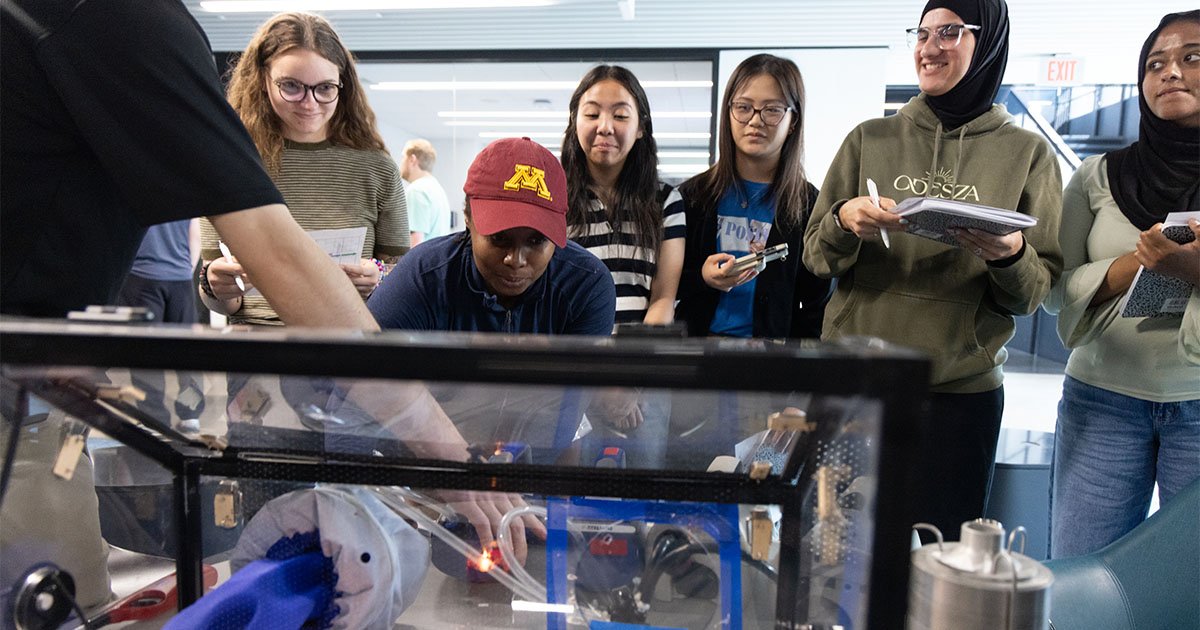On a recent June morning, several undergraduate students from across Minnesota gathered in a hallway on the University of Minnesota campus around a large enclosed display tank containing various items—a burning candle, a piece of balsa wood, an extinguished candle emitting smoke. As instructors modified the items in the tank by lighting the extinguished candle, snuffing out the burning candle, and sanding the piece of wood with a dremel, students used sophisticated tools to measure the size and amounts of the potentially harmful particles and pollutants that were released into the air.
“We’re testing exposure limits,” explained Thomas Peters from the University of Iowa College of Public Health, noting that long-term exposure to smoke and dust particles that some people encounter in the workplace can lead to a series of adverse health effects, including asthma, COPD, and cancer.

The fundamental lesson of the experiment—conducting tests in order to ensure that workplaces are as safe as possible for the people who work in them—is the driving ethos behind the School of Public Health’s Occupational Hygiene MS and PhD programs. As the adoption of emerging technologies in workplaces are introducing new exposures and health risks to workers, there is an urgent need for occupational hygiene professionals equipped to anticipate and respond to these novel hazards and health risks. But, the degree remains “one of the best-kept secrets at the School of Public Health,” according to Susan Arnold, Associate Professor and Director of both the Midwest Center for Occupational Health and Safety and the Exposure Science and Sustainability Institute. “Our students get hired faster than we can graduate them, and their starting salaries have been in the $80,000 to $100,000 range,” Arnold said. “But most people, and especially people from more diverse backgrounds, have still never heard of occupational hygiene.”
Enter the InTERRACT (Interdisciplinary Training, Education and Research Activities for Assessing and Controlling Contaminants from Emerging Technologies) program. Made up of a consortium of schools — SPH, the University of Iowa, and UCLA — and funded by the National Institute of Environmental Health Sciences (NIEHS), InTERRACT engages in a in a range of activities including developing online courses, producing instructional videos, and creating other training materials in order to educate health and safety professionals already studying or working in the field. “InTERRACT has been very successful at educating occupational-hygiene professionals and students to manage risks associated with emerging technologies, but we also wanted to reach people who were less likely to know about this field—people who are not part of the traditional demographic of occupational hygiene workers.”

That sentiment gave rise to InTERRACT’s weeklong, intensive course in occupational hygiene. Targeted at minority scholars and first-generation students, the one-week paid summer program allows undergraduate juniors and seniors to participate in lab-based, hands-on learning, network with professionals, and gain exposure to real-world challenges in industrial hygiene. Over the course of the week, students heard from guest speakers, engaged in classroom learning, performed experiments like the one described above, and took field trips to factories and other workplaces to see how occupational hygienists can directly impact people’s lives.
Puleng Moshele, a PhD student in occupational hygiene and adviser to the InTERRACT summer program, said her path is similar to a lot of people who end up pursuing a degree in the field. A native of Lesotho who came to SPH intending to study environmental health, Moshele had never heard of the field before she arrived on campus and heard an orientation-week talk on occupational hygiene given by Professor Peter Raynor. “I fell into it, and I am so glad that I did because I love this field,” Moshele said. “It encompasses everything I love—we do physics, we do chemistry, we do math, we problem solve, we design studies, we talk to people about their workplace challenges and then work with them to come up with solutions. It’s the combination of all these things that makes me love this field.”
That enthusiasm is what Arnold says she hopes to inspire in the next generation of students participating in InTERRACT’s summer session. “At the closeout session on Friday, several students told me they didn’t know anything about the field coming into the program, but they were now considering occupational hygiene as a potential career path,” she said. “So we did plant some seeds.”

